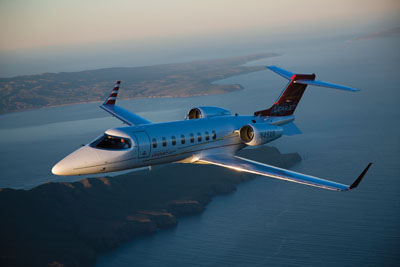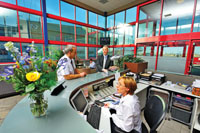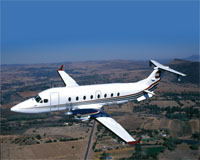
Features
Operations
bizav’s future
Last year was one most would prefer to forget – assuming they are still around to talk about it.
May 13, 2010 By Rob Seaman
Last year was one most would prefer to forget – assuming they are still around to talk about it.
 |
|
| PHOTO: bombardier
|
Corporate aviation was bloodied and beaten not only by the companies who use it, but in an unprecedented manner in the world of public opinion. Taking private aircraft to Washington to beg for bailout money was probably about the worst PR move anyone could have imagined. What were the execs of the Big Three Automakers thinking? And it gathered speed from there as the consumer media grabbed and pushed the antiquated image of corporate fat cats in their “Austin Powers-like aerial shaggin’ wagons.” They took about every opportunity to take a swing at an industry that provides needed jobs, access and support to global markets and remote domestic communities – not to mention aid to foreign lands in times of stress. This fuelled fear in the corporate community – one by one they shed themselves of obvious perks – private, timely and secure business aviation travel being the first to go in many cases. Reputation aside, jobs were lost and an infrastructure that has taken years to develop was dealt a severe blow.
As we turned the page on a new decade, it seemed the worst was over for what many optimists called the natural cycle of things – an up and down trend that has been seen and weathered before. Today, inventories of resale aircraft have levelled to what many term as acceptable. The sell-offs and quick dump or “for sale as theatrics only” opportunities seem to have dried up. That makes for a good start.
Mixed reviews
Like it or not, sales and resale inventory – coupled with new orders and deliveries – are big drivers of success in this business. The trickle-down effects cover everything from support and service operations like FBOs, limos, catering and such, to aftermarket items as simple as lubes and parts, to avionics and interior retrofits and upgrades. In the opinion of many, the bleeding is not quite over and the closure of at least three Montreal-based bizav specialty firms between January and March supports that thinking. That said, the general consensus is the worst is over and the turn-around is well underway.
 |
|
| While there is still weakness in many sectors of the economy, there are signs a recovery has begun. PHOTO: SUNEAST AVIATiON
|
On the new aircraft front, the news is mixed. Embraer recently announced that, while its overall sales were down, the corporate aircraft side was its market leader – understandable, as Phenom 100 and 300 aircraft come into service. That said, a quick scan of the sales books shows many positions in the near and longer term future for these aircraft are up for grabs. The same holds true for many other models. Gone are the multi-year wait times for new aircraft. If you want one sooner rather than later, there is likely to be an opening or position up for grabs. And gone, too, are the premiums that were considered the norm a short while ago. Nervous holders of these aircraft futures who do not want to take delivery, are making attractive deals to simply get out of the commitment. So, a buyers’ market is still the current reality.
Dassault Falcon Jet recently reported record deliveries but profits are being challenged. Pilatus says 2009 for them was another year of records; however, the road ahead shows a possible slowdown as new orders are not rushing in. Together with Cessna, Gulfstream and Hawker Beech, just about all the OEMs are working to reduced manufacturing numbers in an effort to spread things out a little. Many have recalled at least some of the staff that was laid off within the last year, but nowhere near the numbers furloughed. And a few have even announced the reopening of facilities or limited development of new ones – completion and service facilities for the most part.
The resale story is a bit different and more subject to fluctuations and trends. As a case in point, former Canadian sales rep for Dassault Falcon Jet, Herbie Kane, an aircraft broker and the Falcon specialist now with large international brokerage and acquisition firm Avpro, says, “I see gradual improvement this year in both the U.S. and Canada. While there is still weakness in many sectors of the economy, there are signs a recovery has begun. More U.S. and Canadian buyers have come back into the market recently, inventories are down slightly and flight hours are up quite a bit. And while we still have a long way to go, these are indications 2010 will be a better year for the industry than the past 18 months have been.” Kane also notes larger aircraft like big Gulfstreams and Bombardier Global series aircraft are in increased demand. Prices have stabilized and inventory is tough to find in some cases, depending on what the buyer wants.
According to many industry crystal ball gazers, the turboprop market has been more solid and steady than its jet cousins. Fuel pricing and efficiency helped to preserve some of this marketplace in the view of some, and the perception alone of a propeller aircraft versus jet was a saving factor according to others. Rick Pollack is president of Calgary-based Pollock Aviation – a brokerage firm specializing in turboprops. In comparing 2010 to 2009, he says, “There can be no doubt 2009 was a very rough ride in terms of resale aircraft values. Prices for older turboprops dropped in the order of 35 to 40 per cent. In 2010, we are seeing some stability move into the market. The number of aircraft listed for sale has finally begun to drop. Not a lot, but enough to cause some buyers to get off the fence and move into the market. For Canadian operators, 2010 represents a historic buying opportunity, as most aircraft are still priced in U.S. dollars and we note the U.S. exchange rate bouncing around parity. Combine that with the fact that values have dropped, and you can see why I call this a historic buying opportunity.”
Looking at the “support and service” side of the aviation world, things also seem to be improving. At any airport, the ramp activity has notably increased. “Everything seems to be moving along well,” says Skyservice Business Aviation CEO Russ Payson. “Compared to last year at this time, our overall business is up, and in fact verging on passing our 2007 numbers. Charter has been up most notably since March. As for bricks and mortar changes, all our facilities are full right now; however, no expansion or additions are planned at this moment.” If things continue as they are, however, Payson notes they will have no choice but to look at building to meet new sustained demand.
During the recession, Skyservice Business Aviation took the opportunity to invest in itself, improving and building for when business ramps up. This came mostly through technology upgrades. New IT systems have allowed them to work and support clients better and more efficiently, Payson says. As for looking for new or added corporate management aircraft opportunities, Payson believes this side of its business will remain relatively stable with small additions – but certainly nowhere near the growth and explosive demand that was seen through 2007-08.
The one challenge Skyservice has faced this year – and it was brief – was the demise of Skyservice Airlines at the beginning of April. While the two companies have in fact been separate and unrelated for some time (Payson, in fact, sold off any interest in the airline two years ago) the closure and shared name did make for moments of excitement and need for clarification to customers, suppliers, airport authorities and media. Once all was made clear, it was business as usual. However, this closure does highlight the philosophy of many that, overall, there is still some bleeding to happen in the aviation industry this year and perhaps into next.
One firm reporting “not such a bad 2009 and a good 2010” is Calgary’s Sunwest Aviation. Director of business development, Ian Darnley, reports the firm continues to strengthen its position in business aircraft charter and aircraft management in western Canada.
“While much of the industry experienced a major slowdown through 2009, our business remained relatively stable,” he says. “Jet charter declined modestly through 2009, but our turboprop charter, cargo and medevac business was unchanged. Year to date (2010) results show strong increases across all business sectors including aircraft sales and acquisitions.”
Darnley’s competitive edge? “While many of our smaller competitors experiment with costly fractional jet sales programs, our focus continues to be on providing the most diverse charter fleet available and many of our largest charter clients benefit from utilizing our full range of aircraft.” Sunwest offers a Charter Card program that is gaining momentum. It allows customers to gain access to their entire fleet at preferred rates.
Within the past 18 months, Sunwest has added to its managed aircraft fleet with the addition of a Citation Sovereign, G-150, Beech 1900D, Hawker 800 and two Lear 45s. It is scheduled to receive an additional Lear 45 and G-150 later in 2010. The firm has also strengthened its sales team in the past six months with the addition of Geoff Carlyle (charter sales manager) in Edmonton and Brian Granlien (charter sales co-ordinator) in Calgary.
Issues at hand
The last area to look at in the Canadian corporate aviation world is what the CBAA, as the industry guiding light, has on its to-do list – especially in light of the recent POC Programme announcement. Association president and CEO Sam Barone says there are many tasks at hand. First on his list is the Green & Climate Agenda and EU ETS environmental compliance. Part of the CBAA’s ongoing work is to maintain good relations with Nav Canada on air space management issues (costs and issues that have a link to the aforementioned green agenda). Barone also notes the FBO security screening/procedures are now on the radar, targeting business aviation. As he sees it, there will be changes here in the near future.
 |
|
| The Beech 1900D is becoming a favoured choice of corporate flyers nationwide. PHOTO: Raytheon Airline Aviation services |
Border management issues are also becoming more complex – TSA/CBP – and there is what he terms “regulatory burden creep,” i.e., CTA and other agencies, all of which require attention from CBAA. Also of note is the ongoing issue of managing Airport Authority relationships at key gateways, airport access and cost issues and on the short final – planning for the G8/G20 summit in Huntsville/YYZ in June of this year – which includes air space planning as a key component. For this, CBAA will liaise with the Integrated Security Unit/Nav Canada and others to help plan for business aviation issues during G8/G20. Even without the POC, it is clear to see the continued need for the CBAA and its capabilities on behalf of bizav in Canada.
So barring natural disasters, raging fires, floods, swarms of locusts, economic meltdowns or other surprises – we should now be poised for recovery – we hope.